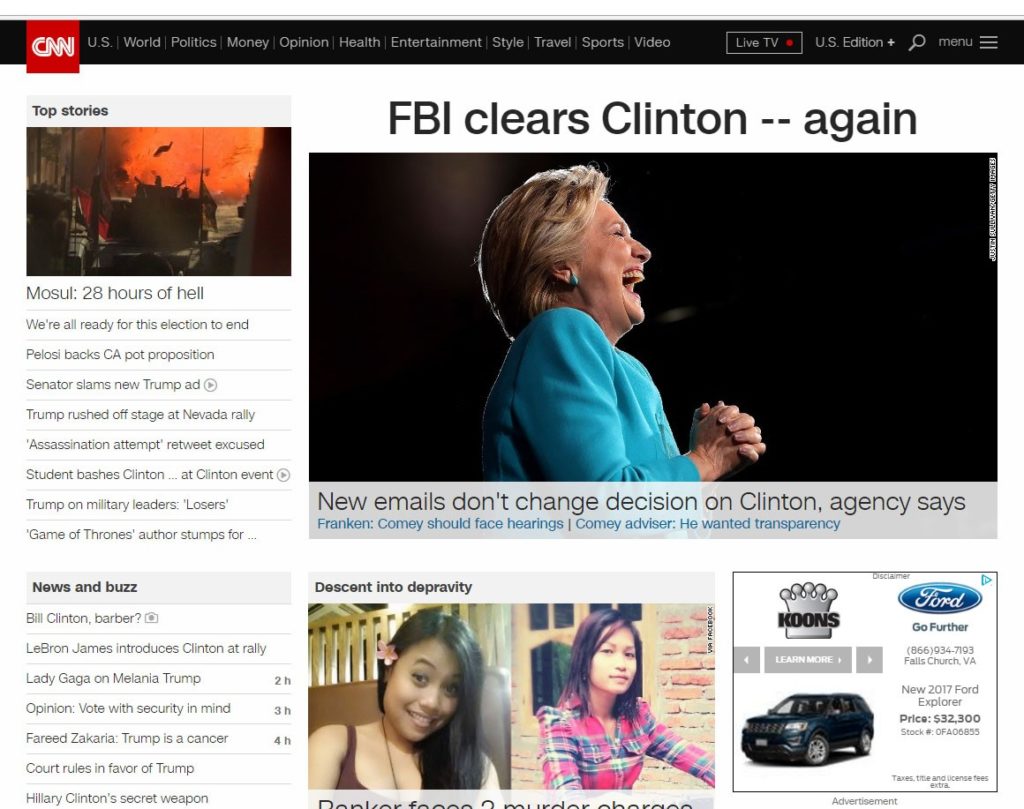As a small business, you might have a lot of terms thrown at you when it comes to marketing and advertising. Some of them may be familiar but others may be a bit more “inside baseball” – the kind of term that industry professionals use but is not so well-known outside of that circle. One of these is certainly “programmatic advertising.”
While you may shrug a bit when you hear it, the concept itself is important to know about if you’re considering any ads for your small business. That’s because programmatic now accounts for roughly 85 percent of all digital advertising,[1] including common placements such as display, native advertising, Connected TV, digital out of home – even your Facebook ads are its own form of programmatic advertising (though you are limited to its network of sites versus other publishers).
So, what is it?
Basically, advertisers buy into an exchange (what’s known as a demand-side platform) – where their ads are placed and served to audiences based on data that the exchange knows about them. The exchange works with various publishers (the supply-side platform) who provide the supply of available ads. Computers and algorithms make the ad buying, placement and optimization of ads more efficient, putting the right ads in front of the right audience across any number of sites.
A programmatic ad buy works in the following way:
- Advertisers request their ads be shown to certain types of users based on data.
- Programmatic networks match the advertiser’s request with those users they have across many different sites to show the right ads to the right individuals.
- Individual publishers can participate in the exchange by giving access to user data, and they a get % of revenue. (Originally, this was the way for publishers to sell remnant inventory, using a third-party network.) Those with their own user data can also essentially “sell” that data to a programmatic network, allowing them to get a share of revenue anytime one of their unique users is shown an ad (even on someone’s else site) based on the data provided.
Programmatic is the reason an advertisement from, say, your local auto dealer, can show up on cnn.com

Programmatic Advertising Options
Given most ads on the Internet these days are programmatic of some sort, you can buy them everywhere through the Google Ad Network, through specific programmatic players, or Google’s own programmatic-specific demand-side platform.[2] Here are more details:
Display Advertising Options
Display advertising is graphical advertising displayed next to content on web pages, applications, e-mail, videos etc. Also called banners, they come in standardized IAB (Interactive Advertising Bureau) ad sizes, and can include text, logos, pictures, and rich media/video.
-
- Google Ads: If you’re already using Google Ads, you can get full access to its display network, which covers many sites already. Google provides targeting here based on data only it collects.
- AppNexus (formerly Xaxis, 24/7 Media): Similar to the Google Ads Network, AppNexus has major, first-tier publishers along with some second-tier publishers. And does programmatic across its sites.
- Google DV360 (Programmatic): If you use Google DV360, this is Google’s demand-side platform (DSP) providing the technology that allows advertisers to bid and buy inventory directly from publishers or from ad exchanges outside of Google’s own network (additional third-party data).
- Other Programmatic Players: Many agencies go outside of Google completely to get access to third-party data and targeting that Google may not have. Among the players here include:
- SmartyAds
- TubeMogul (A Part of Adobe Advertising Cloud)
- Simpli.fi
- MediaMath
- PubMatic
Native Advertising Options
Native advertising is a form of digital advertising that “matches the form and function of the platform on which it appears.”[3] Typically, native advertising comes in the form of content/articles that mirror the content and articles of a publisher’s site. Some of the above players certainly provide native opportunities, though there are additional specialists in the field, including these firms (all of which match advertisers with audiences using programmatic means):
-
- Outbrain
- Gravity
- Taboola
- ShareThrough
Connected TV and OTT Options
Connected TV (CTV) refers to any TV or screen that can be connected to the internet and access content beyond the normal (linear) offering from a cable provider. Examples include: Roku, SlingTV, DirectTV on Demand, Amazon Fire Stick, Apple TV, Chromecast. Etc.
CTV includes ads bought programmatically and shown on computer/mobile streaming, or over-the-top (OTT) devices. If you hear the term OTT advertising, it refers to the ads that appear only for devices like smartphones and tablets or computers (not on the actual original programming on a television, which is known as linear TV.
With CTV, there has been an explosion in advertising demand just in the last few years. For the most part, this has been dominated by ad purchasing from larger companies, which have both the means to produce different video ads and ad budgets to make it work. However, more recently, we’ve seen additional opportunities for small businesses to advertise at costs that fit their budgets. For example, we have advertising running for clients on platforms such a Brandzooka, which specializes in programmatic-based ads for CTV / OTT devices. Also, companies such as Simpli.fi also provide offerings in CTV. (One note: You’ll likely still need to work with an agency as many of these platforms still cater their business to companies like ours.)
Digital Out of Home Options
What is Digital Out of Home (DOOH)? So, for example, you go to the gas station and see a digital ad at the pump. Or you go to a bar and it’s an ad you see on the trivia machine. It’s a burgeoning market for particularly marketing agencies who want to target geographic areas. Demand in 2020 got hit hard by the pandemic, but it’s expected to come back to life again once Covid-19 eases. How does DOOH work? As an example, let’s say I want to target military personnel for an offer, say near a local military base. A DOOH platform will be able to identify gas stations, bars, etc. in the area that can be a potential opportunity.
On top of that, I can access data from mobile usage and the proximity of military personnel’s phones to a particular gas station or bar, and know individuals fitting my target audience have visited there. Hence, the ability to target granularly is what makes DOOH especially attractive. Similar to Connected TV opportunities, this area tends to be the realm of large businesses who can afford the budgets and can create the media assets. Companies with such means might look at a platform such as Pushspring to help them deliver DOOH ads, based on mobile devices and geolocation, for example. It’s certainly an opportunity to keep in mind for your small business as you develop further.
Conclusion
We hope this article has been helpful to give you background on the various advertising opportunities for your business. If you need help, we’re happy to discuss the specific needs of your business. Contact us anytime for a free consultation.
[1] https://www.mediapost.com/publications/article/347524/iab-programmatic-now-85-of-all-us-digital-adve.html
[2] There are plenty of advertisers that still do single-ad buys on specific publisher sites as well.
[3] Wikipedia






